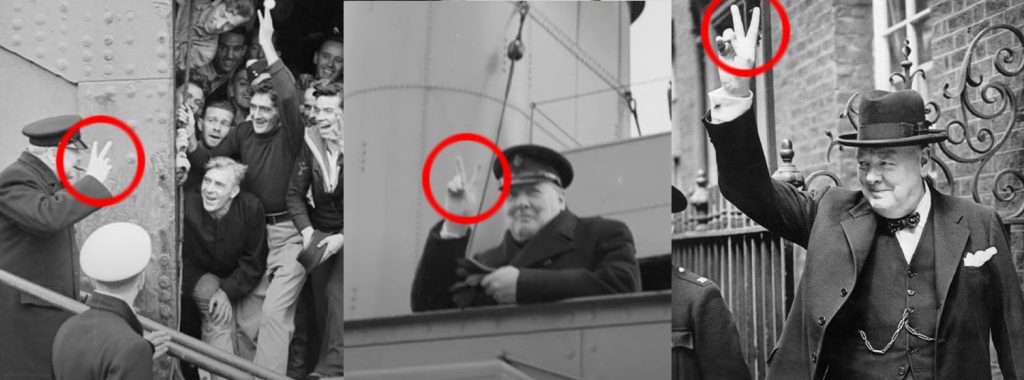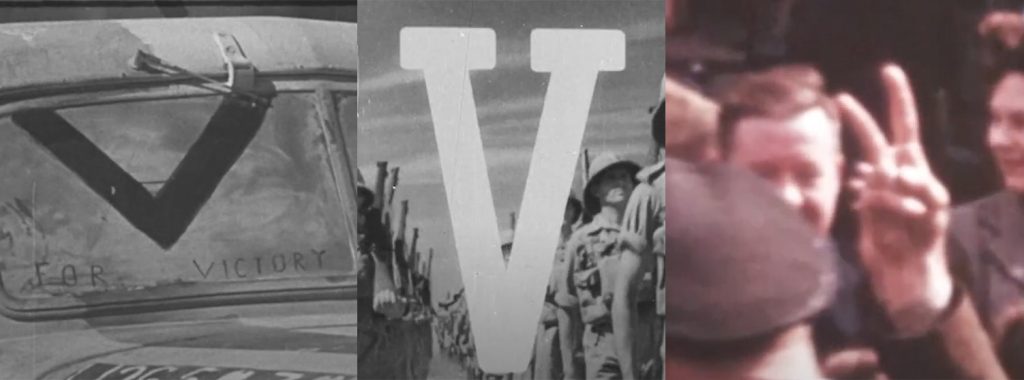Churchill’s “V for Victory” Campaign: A Leader’s Powerful Symbol of Unity

On July 19, 1941, Winston Churchill, our steadfast British Prime Minister, introduced a potent symbol of hope and defiance: the “V for Victory” campaign. This emblem of resistance became a rallying cry for the Allied forces and occupied Europe, showcasing Churchill’s leadership and his ability to inspire a war-torn world.

The Origin of the “V” Symbol
The idea of using the letter “V” as a symbol of victory came from Victor de Laveleye, a Belgian politician and broadcaster. In January 1941, de Laveleye suggested that “V,” the first letter of “victoire” in French, “vrijheid” in Dutch, and “victory” in English, could unify those resisting the Axis powers. This simple yet profound idea quickly spread, as people across occupied Europe began marking the letter “V” in public places as a silent act of defiance.

Churchill’s Leadership and Promotion of the Campaign
Churchill saw the potential of the “V” sign to inspire the public. On July 19, 1941, he endorsed the “V for Victory” campaign in a radio broadcast, urging people everywhere to adopt the symbol as a gesture of defiance and hope.
Churchill himself frequently made the “V” sign with his fingers during public appearances, creating a powerful visual connection between his leadership and the cause of victory. This gesture, captured in photographs and newsreels, became synonymous with his indomitable spirit.
The British government supported the campaign vigorously. The BBC integrated the Morse code for “V” (dot-dot-dot-dash) into its broadcasts, often using the opening notes of Beethoven’s Fifth Symphony, which matched this pattern. Posters, leaflets, badges, stickers and even cigarettes helped spread the “V for Victory” message far and wide.

The Impact of Churchill’s Symbol
The “V for Victory” campaign significantly boosted morale in both occupied and free nations. For those under Nazi control, the symbol provided a sense of solidarity and hope, reminding them that liberation was possible. In Allied countries, it reinforced the resolve to support the war effort and remain united against tyranny.
The widespread use of the “V” symbol also had a psychological impact on the Axis powers, demonstrating the resilience and determination of those they sought to subdue.
Today, Churchill’s “V for Victory” campaign stands as a testament to his leadership and the power of symbols in rallying a nation. His strategic use of the “V” sign not only galvanised the war effort but also left a lasting legacy of hope and unity that continues to inspire.
Churchill’s ability to transform a simple idea into a powerful emblem of resistance and victory exemplifies his extraordinary leadership during one of history’s darkest times. The “V” sign remains a timeless symbol of the enduring human spirit and the fight for freedom.
Thank you for reading.

>>> Click here to secure your Sir Winston Churchill Commemorative now <<<
